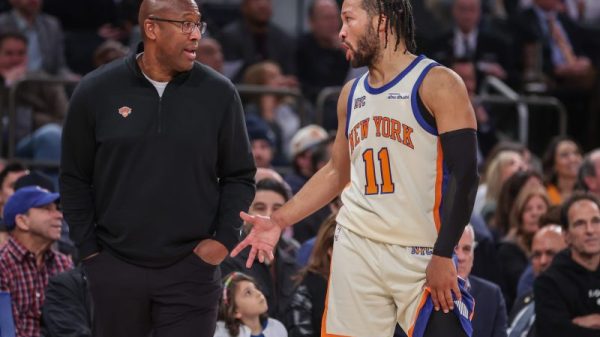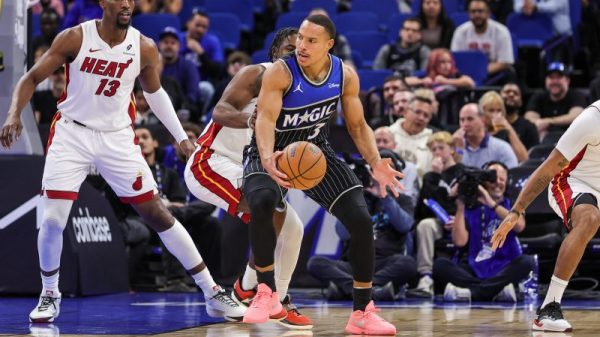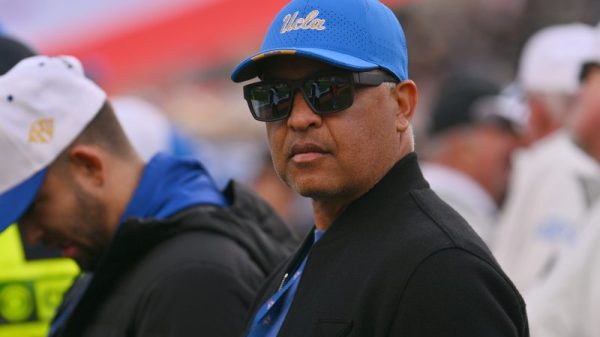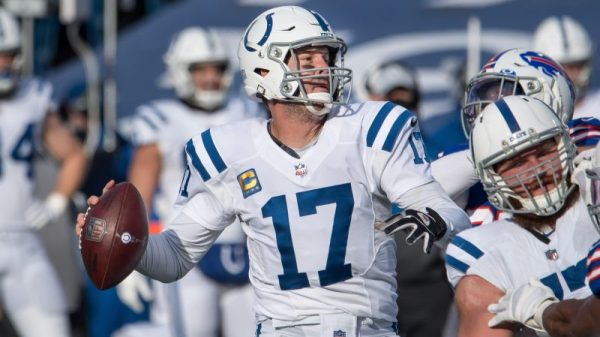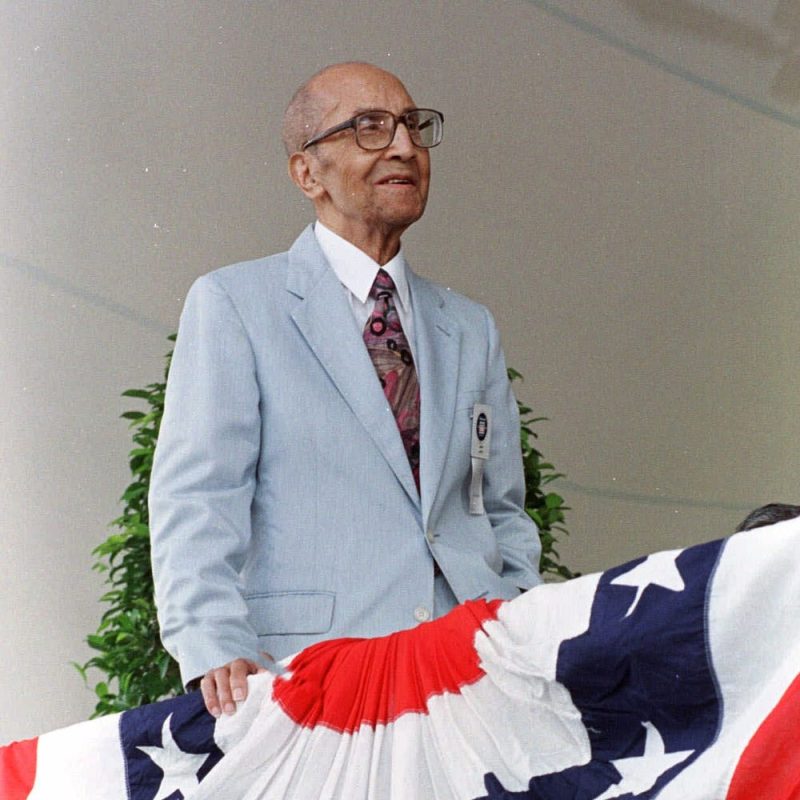In February for Black History Month, USA TODAY Sports is publishing the series “28 Black Stories in 28 Days.” We examine the issues, challenges and opportunities Black athletes and sports officials continue to face after the nation’s reckoning on race following the murder of George Floyd in 2020. This is the third installment of the series.
Sam Lacy looked out at the field on April 15, 1947. It was a day in New York City predicted to be partly cloudy, perhaps in more ways than one. Every time the ball was hit in Jackie Robinson’s direction, the sportswriter felt a lump in his throat. He feared the stress would be too much for Robinson to handle.
Lacy listened to the crowd.
Come on, Jackie
We’re with you…
There was reason to exhale.
‘Branch Rickey made good riddance of bad rubbish here, Tuesday, when he erased the color line in big league baseball and played Jackie Robinson at first base,’ Lacy began his front-page article in the Afro-American newspapers.
It was a moment for which Lacy had waited his entire career, if not his life. But the fight was not over.
Lacy had turned 42, fittingly, on the day in 1945 when Rickey signed Robinson. He would spend three-plus years on the Robinson beat, enduring ‘hell’ at times, as Lacy’s son put it. He would spend eight decades as a journalist, typing out his stories from spots around the country and the world, then, in his later years, writing them out in longhand. When he was in his 90s, he would awaken in the early morning – the middle of the night, really – and drive the 40 or so miles from his Washington, D.C., apartment to the offices of the Afro in Baltimore. If you asked Lacy, whose wife had died in 1969 and whose two children were pursuing their own careers, what else was he going to do?
More to the point: What else had he not done? To look at Lacy’s 99 years is to live the history of social justice in sports as it was made, and as it continues to be made. It is history that Lacy has quietly yet profoundly influenced.
‘Every African American athlete owes Sam Lacy a debt of gratitude,’ Pro Football Hall of Famer Lenny Moore would say when Lacy died in 2003.
Lacy pushed for integration and, ultimately, for equality in sports well before Robinson and well after him. His efforts effected change and eventually landed him in the writers’ wing of the Baseball Hall of Fame. He didn’t make it there until 1997, when he was nearly 94. His character was left out of the movie ’42,’ which was released in 2013, despite Lacy’s deep connection to and influence over Robinson’s story. He has somewhat faded into the background since he died almost 20 years ago.
A look back at his life and career shows how much of a forerunner he was to the advocates within the Black sports community today who continue the push for change.
‘I think about Sam a lot because he really was a guiding light in terms of what my role is in the struggle,’ says sports columnist William Rhoden, whom Lacy mentored as a young reporter in the mid-1970s at the Afro. ‘And it’s the same thing I would pass down now to young, Black sportswriters to appreciate all of these great opportunities…’
‘If he were alive today and he saw what Mike Wilbon was accomplishing,’ Rhoden says, ‘what Stephen A. Smith was accomplishing, and other guys, I think he’d be happy about it. But knowing him, he’d also offer critiques.’
Bigotry, not sportsmanship
Such questions and observations, which would form the backbone of his writing, took shape in segregated Washington in the early part of the 20th century. His father, Samuel Erskine Lacy, a researcher in a D.C. law office, watched games from the right field Jim Crow section at Griffith Stadium. Young Lacy, who picked up baseballs for the big-league players during batting practice, pondered why Negro leaguers couldn’t play for the all-white Senators, too. The question lingered as he played against some of the best in all-Black semipro leagues.
When he later became a full-time sportswriter for the Washington Tribune in the 1930s, he asked Senators owner Clark Griffith why he wouldn’t sign a Black player. Griffith told him the ‘climate’ wasn’t right and that doing so would break up the Negro leagues. That may be true, but to Lacy, the Negro leagues were the very symbol of racism in America.
By the 1940s, Lacy was at the forefront of a movement in the Black press to integrate the major leagues. Lacy even moved to the Chicago Defender to be closer to Baseball Commissioner Kenesaw ‘Mountain’ Landis. When Landis, who wouldn’t budge, died in 1944, the door swung open. Lacy, who was now sports editor of the Afro-American, found an ally in a Brooklyn Dodgers owner who agreed with him on a fundamental level: His ballclub would be better if he fielded Black players.
Lacy and his colleague and friend, Wendell Smith of the Pittsburgh Courier, recommended Robinson to Rickey. Robinson had been an All-America football running back at UCLA and a shortstop for the Kansas City Monarchs, the crown jewel of the Negro leagues.
‘We felt he was the most suitable, not the best Black ballplayer; mainly because he had played in an integrated society, he knew what to expect,’ Lacy would recall. ‘Jackie was married – that makes a big difference. In that climate in the mid-40s, the white population was always suspicious that if you brought a Black person into their society, that Black person was gonna be chasing after some white girl – so Jackie being married eliminated that fear.’
Lacy and Smith shared meals and boarding houses with Robinson in the segregated South during spring training and felt the taunts hurled from the stands. One morning, Lacy and Robinson awakened to a cross burning in their yard. Robinson told Lacy at one point he didn’t know whether or not he could go through with it all. The writer offered him counsel and a voice.
‘I have been asked many, many times, how it feels to be a lone colored man in an otherwise all-white world; what are my reactions to living in a goldfish bowl, as it were,’ he told Lacy for a first-person account that ran in March 1947. ‘My answer now, as it always base been, is that the experience is a nerve-wracking one, yet something I would not have wanted to miss for all the gold in the world.’
In the spring of 1948, after he had won NL Rookie of the Year and helped lead the Dodgers to the World Series in ’47, Robinson reported to spring training 15 pounds overweight. Lacy laid into him about getting complacent. He was too important to fail. Robinson dropped the weight within two weeks.
By the spring of 1955, the Afro reported Lacy would be checking on the progress of 51 ‘colored’ players scattered over 12 big-league camps in Florida.
‘To Sam,’ Robinson wrote to Lacy in a note preserved by the Baseball Hall of Fame, ‘with thanks and appreciation for helping make our career possible. I’ll always be appreciative.’
Empowering athletes
Lacy felt athletes were important vehicles for social change, and he held them accountable about doing their part. He got on Jesse Owens, whom he had covered during the 1936 Olympics in Germany, when Owens said in the late 1960s that ‘the Olympics help bridge the gap of misunderstanding between people in this country.’
Lacy shot back: ‘What gap has been bridged since Jesse was a triple medal winner for the ‘black auxiliary’ (as Hitler termed them) 30 years ago, Owens failed to say.’
Lacy even took offense to the ‘Black power’ fists 1968 Olympians Tommie Smith and John Carlos raised on the medal stand. He thought the sprinters needed to leave their protest at home and not bring their country’s ills into the Olympic spotlight.
‘If it was meant to embarrass the United States, it had a dual effect,’ Lacy wrote from Mexico City. ‘It embarrassed me more.’
When John Steadman, a noted sportswriter for the Baltimore News-American and Sun and a contemporary, promoted Lacy for the Baseball Hall of Fame’s sports writing honor, he wrote how Lacy ‘took a strong stance and never backed away in his pursuit to do what was best in behalf of the black player at a time when prejudice engulfed the field … and also the press box.’
Steadman, though, never got the sense Lacy really enjoyed himself. It was a sentiment he once shared with Rhoden, Lacy’s former mentee, at a Super Bowl.
‘I thought, well, yeah it’s easy for some of my white colleagues to show up, go to these events and drink beer and have a great time because all they see is all the white guys,’ recalled Rhoden, who became a longtime New York Times sports columnist. ‘Where a guy like Sam showed up and you’re always thinking about, ‘Man, there’s no Black folks here,’ there are no other Black journalists from the mainstream media … You just don’t have that luxury just to come and just have a great time because it just galls about how we’ve been pushed aside.’
In 1975, when Lee Elder became the first Black golfer to play in The Masters, tournament officials questioned Lacy’s credentials and didn’t give him access to the press tent. Years earlier, Lacy covered a baseball game from the press box roof in New Orleans. He was joined there in silent protest by a group of white sportswriters. (That pleased him.)
He hammered away at hotels in some major league cities for refusing to integrate for baseball players, the last of them in Baltimore finally doing so in the late 1950s. He reminded his readers, who numbered in the hundreds of thousands, how the football owner in Washington, George Preston Marshall, was the last one in the NFL to integrate his team (in 1962).
‘I find it difficult to overlook the fact that if it had been left to George Preston Marshall, there never would have been any colored players in professional football,’ Lacy said in his A-to-Z column when Marshall died in 1969. ‘He persisted until the very end in holding the line on lily-whitism.’ Lacy also wrote how one of two wills Marshall left, directing that a foundation be set up to help needy area children, had a stipulation that it wouldn’t participate in any activity ‘which supports or employs the principle of racial integration in any form.’
Concluded Lacy: ‘May his soul rest in peace.’
‘The fight is not over’
When Rhoden was a regular during the long run of ESPN’s ‘The Sports Reporters,’ on which columnists debated topics across the sporting landscape, it was a joy for him when Lacy called and offered praise. Or Lacy might say, ‘You gotta speak up. You can’t let him get away with that.’ Or he would tell Bill not to slouch.
There was a time when a job like Rhoden’s wouldn’t have been possible for Lacy. But covering Robinson brought him some acclaim, and Sports Illustrated approached him in 1950. But joining the ‘majority media,’ in Lacy’s words, was never his intention.
‘I’m an old Catholic loyalist,’ Lacy told The Washington Post in 1997, noting he had been with the Afro for 54 years. ‘No other paper in the country would have given me the opportunity to see the world. So how can I leave? Sure, I sacrificed. I lost money. But I’ve lived comfortably. I’ve sent two kids through school. And I pay my rent. And buy my clothes.’
He also became close with Black athletes of his generation, like Robinson, Owens and heavyweight boxing champion Joe Louis, who, just by their presence, were also trying to break down barriers.
‘He loved Joe Louis,’ says Rhoden, now a columnist for ESPN’s Andscape.com. ‘He was a great fighter … but also because of what he meant to Black people. … He wasn’t crazy with what Tommie Smith and John Carlos did in Mexico City and, of course, me being my age and all that, we probably didn’t see eye to eye on that.
‘But that’s what made our relationship cool. You’re supposed to have those generational disagreements.’
Andscape has created a fellowship in Rhoden’s name to develop aspiring sports journalists from HBCUs. As he mentors the next generation, Rhoden makes sure it knows about Sam Lacy and what he endured.
‘It’s not over,’ Rhoden says. ‘I’m at the Super Bowl and I’m looking around and it’s still astounding about how few African Americans there are. … Sam probably would be nuts about that: How there still are so few young African Americans in the sports media. Because when I think of Sam, I just think how the fight is not over.’







